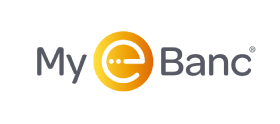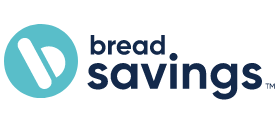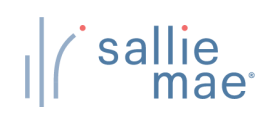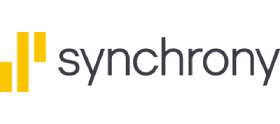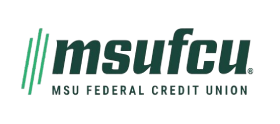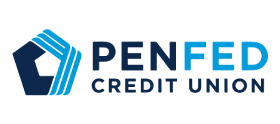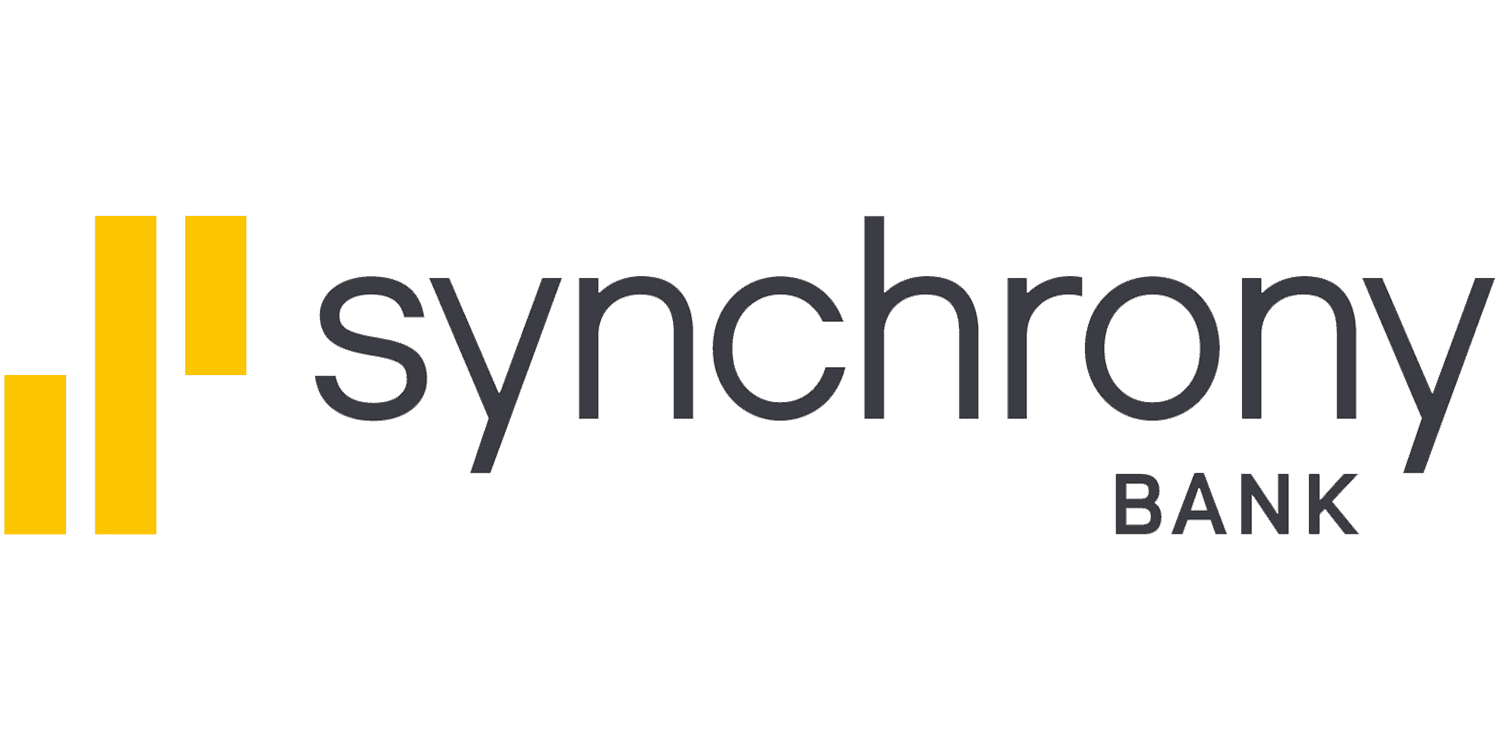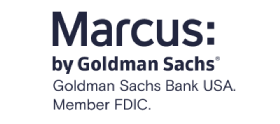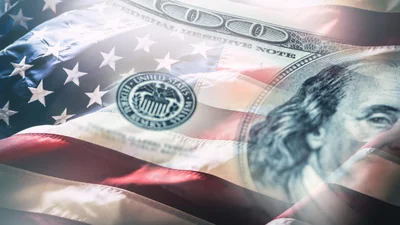Best CD rates of April 2024 (Up to 5.30%)
Updated 2:02 p.m. UTC April 26, 2024
Editorial Note: Blueprint may earn a commission from affiliate partner links featured here on our site. This commission does not influence our editors' opinions or evaluations. Please view our full advertiser disclosure policy.
Savers now have the pleasure of picking a juicy yield among the best certificates of deposit (CDs) on the market in 2024. The trick is opting for a CD that not only includes a high interest rate but also comes with great customer service and requires a low minimum balance.
Annual percentage yields (APYs) and account details are accurate as of April 24, 2024.
Summary of the top CD rates
Why trust our banking experts
We base our decision on which banks and products to include in our lists solely on an independent methodology, which you can read more about below. No financial institution or advertiser affects our selections. Moreover, our banking team consists of Taylor Tepper and Jenn Jones, who have won multiple journalism awards and have more than two decades of combined experience in the personal finance industry. These editors are accompanied by a team of analysts who help us accumulate data and ensure its accuracy. Ultimately, we evaluated hundreds of products and analyzed thousands of data points to help you find some of the highest CD rates today.
- 140 CDs from 84+ financial institutions reviewed.
- 4 levels of fact checking.
- 50+ data points analyzed.
Discover® Certificates of Deposit
Best CD rates of April 2024
Compare the best CDs
For easy comparison, here are all the best CDs all in one place.
| NAME | STAR RATING | APY ON ONE-YEAR CDS | APY ON FIVE-YEAR CDS |
|---|---|---|---|
Barclays
| 4.4 | 5.00%
| 3.75%
|
Sallie Mae Bank
| 4.8 | 4.95%
| 4.00%
|
My eBanc
| 4.7 | 5.30%
| N/A
|
Bread Savings
| 4.6 | 5.25%
| 4.15%
|
First National Bank of America
| 4.6 | 5.15%
| 4.55%
|
Michigan State University Federal Credit Union
| 4.6 | 4.25%
| 3.70%
|
Synchrony Bank
| 4.6 | 4.80%
| 4.00%
|
PenFed
| 4.6 | 4.20%
| 3.50%
|
Discover
| 4.5 | 4.70%
| 3.75%
|
Marcus by Goldman Sachs
| 4.4 | 4.90%
| 4.00%
|
Capital One 360
| 4.4 | 4.80%
| 3.90%
|
HSBC Direct
| 4.4 | 4.70%
| N/A
|
Methodology
CDs used to play an important, albeit complementary, role in the finances of everyday Americans. Roughly a fifth of households owned a CD in 1989, according to the Fed. They were still in vogue nearly two decades later, as more than 16% used them in 2007.
In 2022, however, only 6.5% of households had a CD.
The reason? CDs used to be a much better deal. At the beginning of 1989, for instance, a one-year CD offered an 8.30% APY. By 2007, it was just 3.7%.
By the start of 2022, before the Fed started hiking rates, a one-year CD still paid next to nothing.
The story behind drooping CD rates is complicated, and it involves: falling inflation (until recently), an aging population, technological innovations and the Federal Reserve lowering interest rates. The aftermath of the Great Recession, in which the Fed kept interest rates near zero for almost a decade as inflation continually ran below its desired level, is just the most recent trend.
That’s what has made the current moment so interesting. CD yields jumped in 2022 after the Fed raised rates by 4.25 percentage points in nine months, and continued to rise as the Fed hiked borrowing costs.
The upshot, though, is the same: Americans are more likely to consider CDs if they pay more in interest, especially compared to inflation. After all, a one-year CD that pays less than 1% is hardly worth it when prices are rising twice as fast.
We took this historical lesson to heart when crafting our ratings, as you can see below:
- APY: 70%.
- Customer Experience: 10%.
- Minimum Deposit: 5%.
- Compound Interest Schedule: 5%.
- Digital Experience: 5%.
- Available Terms: 3%.
- Availability: 2%.
To reach our rankings, we examined the terms of 416 CDs offered by 136 banks and credit unions. We considered various factors in each category.
For instance, to determine APY, we documented the interest rate offered on 17 different terms. To rank customer service, we documented how the financial institutions were ranked by the Better Business Bureau and JD Power.
Additionally, we valued accounts with lower minimum deposits, daily compound interest schedules (rather than monthly) and those that are available to everyone, regardless of where they live.
While non-APY factors are important, we believe that your potential earnings should reign supreme.
Why some banks didn’t make the cut
Stare at our rankings for a while and something obvious becomes apparent: a dearth of big banks.
No Chase Bank, no Bank of America, no Citi® and no Wells Fargo. The four largest financial institutions in the nation, which together own nearly $10 trillion in assets, don’t offer a competitive CD.
How come?
Well, they don’t have to.
The big banks enjoy the benefits of generations of customers and high name recognition. When the typical person thinks about opening a bank account, their mind tends to drift toward at least one of the big four.
If a bank wants to make a splash, then, they need to offer higher rates.
The story is similar for the next three biggest banks: U.S. Bank, PNC Bank and Truist, regional powers all. Their offerings are either not high enough, or aren’t robust enough, to warrant inclusion.
The only top 10 banks to make the cut prove the point. Capital One and Goldman’s Marcus by Goldman Sachs each offer high rates in an effort to win business from more established banking institutions. After all, Capital One is basically a Gen Z-er (it was conceived in the mid-1990s).
The CD providers we monitor
We track 136 banks and credit unions that provide consumer CDs:
ableBanking, Affinity Federal Credit Union, Alliant Credit Union, Ally Bank, American Express Bank, Andigo Credit Union, Apple Federal Credit Union, Armed Forces Bank, Axos Bank, BancorpSouth Bank, Bank of America, Bank OZK, Bank5 Connect, BankDirect, BankPurely, BankUnitedDirect, Barclays, Bask Bank, BB&T, BECU, Bethpage Federal Credit Union, Blue Federal Credit Union, BMO, BMO Harris, Bread Financial, BrioDirect, Cadence Bank, Capital One, CFG Bank, Charles Schwab Bank, Chase, Chevron Federal Credit Union, CIBC Bank, CIT Bank, Citibank, Citizens Access, Citizens Bank, Colorado Federal Savings Bank, Comerica, CommunityWide Federal Credit Union, Connexus Credit Union, Consumers Credit Union, Consumers Credit Union (MI), Credit Union of Denver, Digital Federal Credit Union, Discover, DollarSavingsDirect, EmigrantDirect, EverBank, Exchange Bank & Trust, Fidelity, Fifth Third Bank, Financial Partners Credit Union, Financial Resources Federal Credit Union, First Citizens Bank, First Foundation Bank, First Horizon Bank, First Internet Bank, First National Bank and Trust Company, First National Bank of America, Georgia’s Own Credit Union, Golden 1 Credit Union, Greenwood Credit Union, Hanscom Federal Credit Union, Heritage Bank, HSBC Direct, Hughes Federal Credit Union, Huntington Bank, Ideal Credit Union, iGObanking, IncredibleBank, Investors eAccess, KeyBank, Kinecta Federal Credit Union, La Capitol Federal Credit Union, LendingClub, Limelight Bank, Live Oak Bank, M&T Bank, MAC Federal Credit Union, Main Street Bank, MainStreet Bank, Marcus by Goldman Sachs, MSU Federal Credit Union, My Banking Direct, My eBanc, MySavingsDirect, NASA Federal Credit Union, Nationwide, Navy Federal Credit Union, nbkc bank, Northern Bank Direct, Northpointe Bank, Nuvision Federal Credit Union, Pacific National Bank, Paramount Bank, PenAir Credit Union, PenFed Credit Union, PNC Bank, Popular Direct, Presidential Bank, PSECU, Purepoint Financial, Quontic Bank, Quorum Federal Credit Union, Radius Bank, Regions Bank, Rising Bank, Salem Five Direct, Sallie Mae Bank, Santander, SchoolsFirst Federal Credit Union, Security Service Federal Credit Union, Service Credit Union, Simple, Spectrum Credit Union, State Bank of Texas, State Department Federal Credit Union, State Farm Bank, Superior Choice Credit Union, Synchrony Bank, TAB Bank, TD Bank, Texas Bank, Texas Capital Bank, TotalDirectBank, Truist Bank, U.S. Bank, Union Bank & Trust, USAA, USALLIANCE Financial, Vio Bank, VirtualBank, Webster Bank, Wells Fargo and Zions Bank.
Best 6-month CD rates
If you have a short time-period in which to save, consider these six-month CD options. You can earn a high yield, and get back into the market quickly should yields stay high.
As of April 23, 2024, the current national high rate for a 6-month CD is 5.45% APY according to Curinos data (rates are based on a $25,000 minimum deposit).
Learn more: Best 6-month CD rates.
| Institution | Star Rating | 6-month APY | Minimum Balance |
|---|---|---|---|
My eBanc
| 4.8 | 5.20%
| $5,000
|
Michigan State University Federal Credit Union
| 4.5 | 4.15%
| $500
|
Bank5 Connect
| 4.4 | 5.05%
| $500
|
Sallie Mae Bank
| 4.3 | 4.80%
| $2,500
|
Synchrony Bank
| 4.2 | 4.80%
| $0
|
Marcus By Goldman Sachs
| 4 | 4.80%
| $500
|
TAB Bank
| 4 | 5.27%
| $1,000
|
HSBC Direct
| 4 | 4.00%
| $1,000
|
Dollar Savings Direct
| 4 | 4.00%
| $1,000
|
LimeLight Bank
| 4 | 4.50%
| $1,000
|
Bethpage Federal Credit Union
| 3.9 | 4.00%
| $50
|
CommunityWide
| 3.8 | 5.30%
| $1,000
|
Best 1-year CD rates
One-year CDs currently occupy the sweet spot for CD shoppers, thanks to a minimal commitment and high yields. (That’s largely thanks to the Federal Reserve raising short-term rates significantly, while market observers believing the economy will slow in the years-to-come).
As of April 23, 2024, the current national high rate for a 12-month CD is 5.37% APY according to Curinos data (rates are based on a $25,000 minimum deposit).
Learn more: Best 1-year CD rates.
| INSTITUTION | STAR RATING | 1-YEAR APY | MINIMUM BALANCE |
|---|---|---|---|
My eBanc
| 4.7 | 5.30%
| $5,000
|
Michigan State University Federal Credit Union
| 4.7 | 4.25%
| $500
|
Connexus
| 4.7 | 5.01%
| $5,000
|
Sallie Mae Bank
| 4.6 | 4.95%
| $2,500
|
PenFed
| 4.6 | 4.20%
| $1,000
|
Bread Savings
| 4.5 | 5.25%
| $1,500
|
First National Bank of America
| 4.5 | 5.15%
| $1,000
|
Synchrony Bank
| 4.4 | 4.80%
| $0
|
Citibank
| 4.4 | 2.00% to 3.00%
| $500
|
Best 5-year CD rates
You can typically earn the most interest on longer CD terms. If you don’t need to touch some cash for a while, 5-year CDs can be a great option. See the link below for more information on each CD and on how we determined the best.
As of April 23, 2024, the current national high rate for a 5-year CD is 4.6% APY according to Curinos data (rates are based on a $25,000 minimum deposit).
Quick tip. Consider a long-term CD to help you pay for a big-ticket item (a new golf cart, perhaps) before the Federal Reserve cuts rates and longer-term yields likewise fall.
| BANK | STAR RATING | FIVE-YEAR APY | MINIMUM BALANCE |
|---|---|---|---|
Sallie Mae Bank
| 4.8 | 4.00%
| $2,500
|
Bread Savings CD
| 4.7 | 4.15%
| $1,500
|
Synchrony Bank CD
| 4.5 | 4.00%
| $0
|
Discover CD
| 4.5 | 3.75%
| $2,500
|
First National Bank of America
| 4.4 | 4.55%
| $1,000
|
Capital One 360
| 4.3 | 3.90%
| $0
|
Barclays
| 4.3 | 3.75%
| $0
|
Learn more: Best 5-year CD rates.
Latest CD rate news
Eventually the Federal Reserve will stop the CD yield party, but it won't be now.
Recent events have caused market participants to believe that the Fed will be slower to raise interest rates this year than previously predicted thanks largely to prices still rising too quickly.
Take recent inflation reports. The Fed's preferred gauge, the so-called core PCE report, showed prices 2.8% higher in March than the year prior. That comes on the back of the widely report consumer price index, which showed prices rising 3.5% over the previous 12 months, driven recently by increasing gas and food away from home (i.e. restaurant) costs.
"Given the elevated levels of inflation – and this is the new normal for 2024 – the market is going to need to get over hopes for Fed rate cuts," said Chris Zaccarelli, chief investment officer for Independent Advisor Alliance.
Both reports follow conflicting economic news.
The March jobs report showed a humming economy, with employers adding 303,000 jobs, while the unemployment rate was just 3.8%. However, the economy grew at an annual rate of 1.6%, after accounting for seasonal factors and inflation, below analysts' expectations.
Read more: How the Fed's rate decisions affect CD yields
Still, high prices and a strong jobs market are hardly the key ingredients for the Fed when it is trying to slash rates.
"Rates aren’t going higher, but the distance to a rate cut is another quarter," said Jamie Cox, managing partner for Harris Financial Group.
Many analysts are now expecting the Fed to cut rates fewer times than expected this year. Wells Fargo Securities, for instance, dropped its forecast to two rate cuts in 2024, down from three.
These developments show how quickly the narrative can change.
Following the Federal Open Market Committee meeting that ended March 20, the Fed held rates steady at 5.25% to 5.50% and reiterated that it expected to cut rates three times later this year.
Read more: The best high-yield savings accounts
Ultimately, the Fed doesn't want to rush its decision and potentially throw gasoline on an overheating economy. This means that yields on savings products, including CDs, may remain higher for longer than many expected.
"The labor market is going pretty strong, and the rate of inflation has come way down, though it's still above the Fed's 2% target," said Allison Kaminaga, professor at Bryant University. "The Fed can afford to be patient."
When rate cuts do indeed begin, you can expect many banks to respond by lowering CD yields.
How to choose the best CD
Prioritize rates. The main purpose of investing is to earn money. Research the highest CD rates available, which are typically offered by online banks and smaller financial institutions.
Consider time. How long are you willing to lock away your funds? Can you afford to hand over a bundle of your cash for six months? One year? 10 years? Make sure you have a fully-financed emergency fund before you consider a CD.
Look at withdrawal allowances. If you need to, are you able to make an early withdrawal? If so, what would the penalty be? Ideally you’d want to opt for a CD that charges little in the way of fees. If you are at all concerned about needing the money in the near future, consider opting for a no-penalty CD. While interest rates are typically lower, you won’t be penalized if you need to access your cash.
Check requirements and insurance. Many CDs require a minimum balance, such as $1,000. Make sure you can meet the requirements to open the CD you desire. And be careful that any CD you open will be completely covered by deposit insurance from the Federal Deposit Insurance Corporation (FDIC) or the National Credit Union Administration (NCUA), which guarantee funds up to $250,000 for each depositor at each covered institution.
See CD types. If traditional CDs aren’t meeting your needs, look up other types. For example, no-penalty CDs allow you to make fee-free withdrawals; add-on CDs typically have low minimum requirements and allow you to increase your principal over time; bump-up CDs allow you to request an APY increase, which can be useful in a rising-rate environment.
Comparing CD rates
It’s easy to compare the face value of one CD rate to another: A higher number is better. Yet when CDs are for different terms, it can be much harder to know how one will pay off versus another.
To better judge apples to apples, use a CD calculator. It’ll determine the dollar amount you’ll earn from each CD, which may make your decision easier.
Current CD rates show that terms between one and three years offer the highest yields, though there are exceptions. Focus on those terms, especially if you’re considering employing a CD ladder.
National average interest rate for CDs
Here are the national deposit rates as of April 15, 2024, according to the Federal Deposit Insurance Corporation (FDIC).
| CD TERM | NATIONAL DEPOSIT RATE |
|---|---|
1 month CD
| 0.22% APY
|
3 month CD
| 1.65% APY
|
6 month CD
| 1.57% APY
|
12 month CD
| 1.81% APY
|
24 month CD
| 1.54% APY
|
36 month CD
| 1.41% APY
|
48 month CD
| 1.32% APY
|
60 month CD
| 1.39% APY
|
Pros and cons of CDs
Certificates of deposit can be useful tools, though, like all financial products, there are tradeoffs to consider.
Pros
Higher yields. CDs typically provide higher yields than other savings products, such as high-yield savings accounts or money-market accounts, thereby allowing you to earn more. Banks will typically pay that higher yield because you are agreeing to lock up your capital for a prescribed period of time, and can only access your contribution by paying a penalty (unless you have a no-penalty CD, which yields less than traditional CDs).
Rate protection. Tying up your cash for a period of months, or years, means you'll earn a guaranteed yield for that period of time. That is, a one-year CD yielding 5.00% will pay that 5.00% for an entire year, even if interest rates drop. Banks, on the other hand, can lower your savings account yield at any time.
Savings trick. Because your money is tied up, a CD is a wonderful savings tool. Let's say you want to spend $3,000 on a family vacation next year. By putting that $3,000 into a one-year CD, you'll not only earn some interest, but you'll protect yourself from spending that cash on other things.
Cons
Less flexibility. In order to earn the higher fee, you'll have to sacrificing access to your cash during the CD term. That means you won't be able to dip into the cookie jar if an emergency arises without paying a fee.
Fees. If you need to spend money that's in your savings account, you can usually do so without paying any fees. That's generally not the case with CDs. The specific amount of early withdrawal penalties depend on your particular account, so make sure you are aware of the fine print before opening the CD.
Miss out on yield increases. If you open a one-year CD, and then the Fed raises interest rates the next week, you won't be able to earn that higher yield.
How to build a CD ladder
One way to account for both the pros and cons of a CD is to create a CD ladder, which allows you to earn higher rates offered by longer terms without locking up your cash forever.
For example, assume you have $9,000 to invest and you make a ladder of three CDs. You put $3,000 each into one, two and three-year CDs. When the one-year CD matures, you convert it to the higher-rate, 36-month CD, then do the same with the 24-month CD. This way you end up with three 36-month CDs with high APYs, with one maturing each year.
Here are the steps to build a CD ladder of your own:
- Divide the amount of money you want to invest by however many CD terms you want.
- Research the best CDs to find the best providers and the best rates for different lengths.
- Open and set up the CD accounts you want.
- As the CDs mature, reinvest the cash into longer term CDs.
Quick tip. A CD ladder can help you take advantage of the best rates at any maturity without cutting yourself off from all your cash.
The second step, however, is crucial. Just because the Fed has raised interest rates doesn’t mean that you’ll get the same, or even similar rates, from different financial institutions on the same CD term.
“Even though rates are rising, not all banks will raise your savings interest rate accordingly,” said Tony Molina, a CPA at Wealthfront. “Make sure you move your money to an account that passes on the increased rates to you-otherwise you’re missing out on basically free money.”
A CD ladder gives you the freedom to cash out a hunk of money if you need it or reinvest your money without sweating about locking away your funds—because your next CD is maturing next year.
How are CDs taxed?
In most cases, Uncle Sam counts the money you make from your deposits as taxable income. If you earn $10 or more, a financial institution should send you (and the IRS) an annual 1099-INT form that reports your interest earnings. If you don’t receive a form, you’re still responsible for reporting the income.
If you make at least $1,500, you’ll also need to itemize your sources of interest income on Schedule B of the 1040. The good news is that there are some exceptions, but they mostly apply to investment vehicles issued by the government.
The amount you pay depends on your specific marginal tax bracket.
Income interest from treasury bills, notes and bonds, such as I Bonds, are exempt from state and local income taxes.
What happens to CDs at maturity?
When a CD matures, you have a grace period (typically seven days) in which you can either renew the CD term, or withdraw the funds entirely. Many CDs automatically renew if you do not withdraw them.
Renewing generally provides two options. You could reninvest the original amount plus the interest you’ve earned or reinvest only the original amount.
Withdrawing the funds can pay off if you use them to invest in other CDs with higher yields. In the time between your purchasing of the CD and its maturity, APYs have likely changed. Your financial needs and abilities may have altered as well. Withdrawing your mature CD to reinvest in a new deposit vehicle that better suits can be smart.
Frequently asked questions (FAQs)
CD rates change on a regular basis. But, of course, a higher CD rate is always better. As of April 15, 2024, the national average rate on a 12-month CD is 1.81% APY. However, you can find many banks offering APYs well above this national average, especially if you consider the winners in our ranking.
You’ll typically need the following pieces of information in order to open a CD: your name, address, Social Security Number, government issued identification and phone number. You can provide this information either online, or in person, though you’ll likely find the best rates on the former. Once you’re approved, you’ll be able to fund the CD either with money from a connected bank account or one not affiliated with the bank altogether.
Savings accounts allow you to make deposits whenever you want, as well as make withdrawals without penalty. They have no term limit, though you’re not guaranteed a particular interest rate. By contrast, traditional CDs require that you lock away a set amount of money for a set amount of time. If you can make a withdrawal at all, you almost always have to pay a financial penalty for doing so. The trade off is that CDs generally have higher yields; however, high-yield savings accounts can be competitive.
While it’s easy to get excited about high yields on long-term CDs, it’s still vital to confirm that a long-term investment fits within your overall financial strategy. That is, buy a high-yielding CD if it makes sense within your larger financial plan.
CD yields are plateauing at the beginning of 2024 and will most likely decrease later in the year based on expectations expressed by Fed board members and data from the CME FedWatch Tool.
Editor’s Note: This article contains updated information from previously published stories:
Blueprint is an independent publisher and comparison service, not an investment advisor. The information provided is for educational purposes only and we encourage you to seek personalized advice from qualified professionals regarding specific financial decisions. Past performance is not indicative of future results.
Blueprint has an advertiser disclosure policy. The opinions, analyses, reviews or recommendations expressed in this article are those of the Blueprint editorial staff alone. Blueprint adheres to strict editorial integrity standards. The information is accurate as of the publish date, but always check the provider’s website for the most current information.

